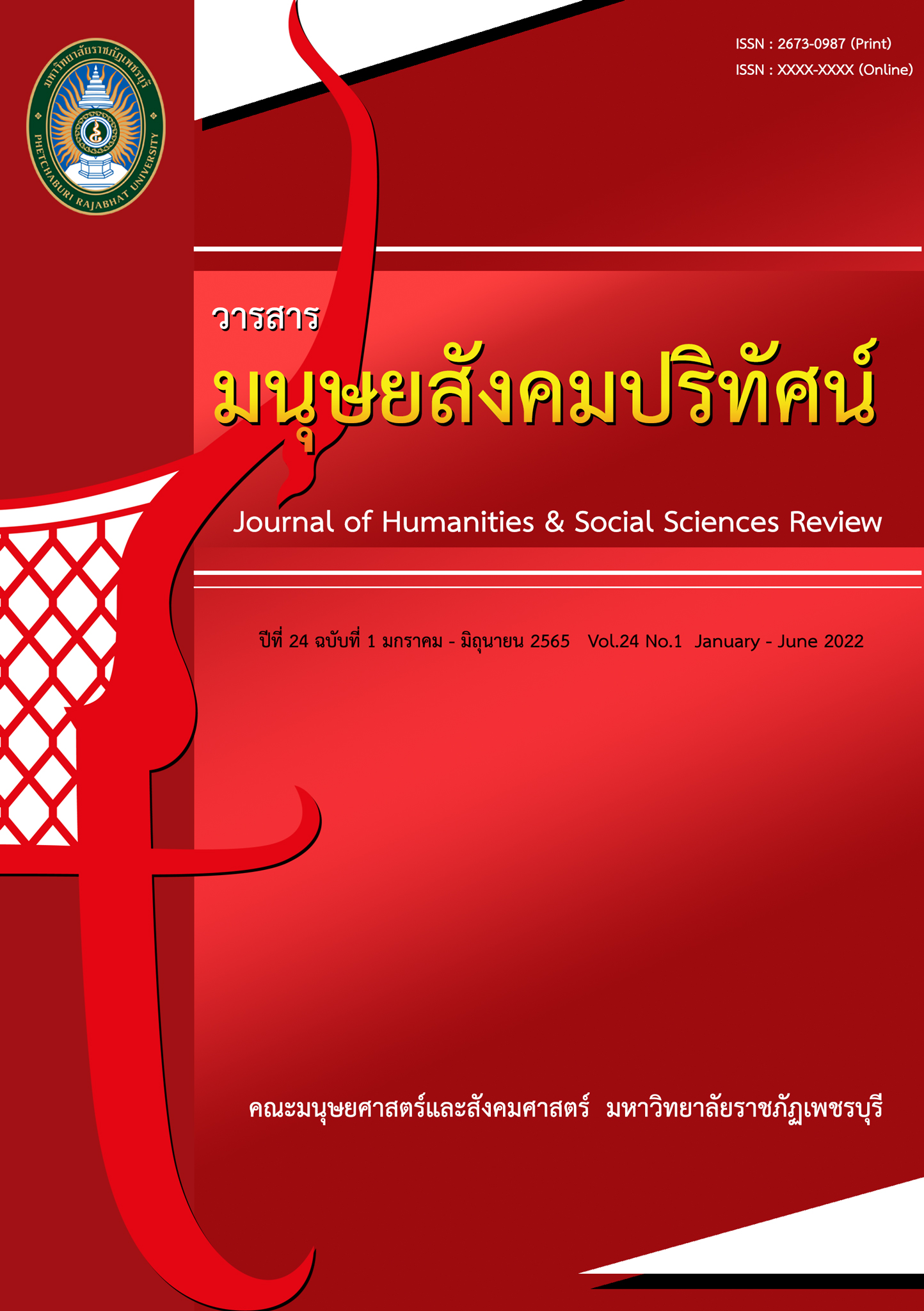The Development of Competency Indicators for Creative Thinking Skills of B.Ed. students in Early Childhood Education
Main Article Content
Abstract
The purpose of this research was to create and analyze competency indicators for creative thinking skills of B.Ed. students in Early Childhood Education. Research sample consisted of 310 undergraduates who enrolled in the B.Ed. program in Early Childhood Education at Ramkhamhaeng University. The research participants addressed an assessment survey designed following a 5-point rating scale. Numerical research data were examined by means of statistical calculation regarding frequency distributions, median, interquartile range, percentage, mean, standard deviation, correlation coefficient and Exploratory Factor Analysis (EFA). The findings showed that the B.Ed. students’ creative thinking skills derived from 3 main factors and 20 subsidiary competency indicators. The first factor was the fluency thinking. It had 8 indicators in relation to 1) abilities to use word order in phrases and sentences 2) fluency in communication 3) providing creative thoughts within a time limit 4) using synonyms in communication 5) having solution fluency 6) organizing and categorizing ideas 7) applying knowledge and ideas in daily life and 8) abilities to adapt critical thoughts in different situations. The second factor was the diversity of thoughts. This factor comprised 6 indicators related to 1) meticulous and elaborative thinking 2) considering interrelationship and its meaningfulness 3) applying imagination into a physical reality 4) having feelings of confidence to gain new knowledge and experience 5) expanding the clear understanding of new knowledge and 6) creating complete works and products. The third factor was the originality of thoughts. The factor consisted of 6 indicators with respect to 1) making ideas to provide positive impacts on personal life and society 2) crating original thoughts 3) having skills required for making original contribution and its practical application 4) having divergent thinking 5) having independent thinking and 6) presenting diverse and new perspectives. Considering all factors and subsidiary assessment indicators, the quantitative findings were interpreted in relation to pedagogical theories of creativity.
Article Details
1. Any views and comments in the article are the authors’ views. The editorial board has not to agree with those views and it is not considered as the editorial board’s responsibility. In case, there is any lawsuit about copyright infringement, it is considered as the authors’ sole responsibility.
2. The article copyright belonging to Faculty of Humanities and Social Sciences, Phetchaburi Rajabhat University are copyrighted legally. Republication must be received direct permission from the authors and Phetchaburi Rajabhat University in written form.
References
ชุติมา วงษ์พระลับ. (2553). ความคิดสร้างสรรค์ที่สรรค์สร้างได้. วารสารศึกษาศาสตร์ มหาวิทยาลัยขอนแก่น, 33(4): 10–21.
ธมลวรรณ เศรษฐหิรัญกุล และชลาธิป สมาหิโต. (2562). การจัดประสบการณ์การเรียนรู้แบบสเต็มศึกษา เรื่องวัฒนธรรมท้องถิ่นจังหวัดนนทบุรี เพื่อพัฒนาความคิดสร้างสรรค์ของเด็กปฐมวัย. วารสารศึกษาศาสตร์ มหาวิทยาลัยสุโขทัยธรรมาธิราช, 12(1): 99-109.
รวีวรรณ สุขสาร. (2563). 3R 8C. สืบค้นเมื่อ 23 ตุลาคม 2563, จาก https://sites.google.com/site/khrurwi/kar-cadkar-reiyn-ru-ni-stwrrs-thi-21/3r-8c.
ศิรินภา คุ้มจั่น และคณะ. (2562). การพัฒนาหลักสูตรความคิดสร้างสรรค์สำหรับเด็กปฐมวัยในยุคการศึกษา 4.0. วารสารการวิจัยและพัฒนา วไลยอลงกรณ์ ในพระบรมราชูปถัมภ์ สาขามนุษยศาสตร์และสังคมศาสตร์, 14(1): 42-51.
อารี พันธ์มณี. (2537). ความคิดสร้างสรรค์ (พิมพ์ครั้งที่ 3). กรุงเทพฯ: โรงพิมพ์ข้าวฟ่าง.
Guilford, J.P. (1967). The Nature of human intelligence. New York: McGraw Hill.
Jellen, H.G., & Urban, K.K. (1986). The TCT-DP (test for creative thinking-drawing production): An instrument that can be applied to most age and ability groups. Creative Child & Adult Quarterly, 11(3): 138–155.


